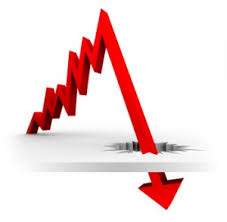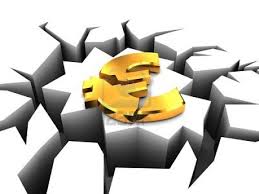After reading the title of the article everyone must be thinking- negative interest rates, really? We all are familiar with the term ‘interest rates’. It means the additional amount that a borrower has to repay along with the principle lending amount or it means the additional amount earned on lending money to someone. But what would a negative interest rate mean? Yes you are right! Negative interest rate implies that the borrower gets additional amount as interest on the amount it borrows. For example if the interest rate on a sum of $100 is -2%, it means that the borrower, along with the amount $100, will get an interest of $2 instead of paying interest to the lender.
The main purpose of such negative interest rates is to encourage borrowings and stimulate investment in the economy. When a central bank charges negative interest rate it means that people will need to pay interest in order to deposit their cash in the banks. This is done to encourage people to spend their money and increase the aggregate consumption. This increase in aggregate demand will lead an increase in the national income and hence will be beneficial for the economy. Central bank implements such interest rates by its monetary policy.
The euro zone is first to adapt a negative interest rate policy. The European Central bank (ECB) set the depository rates at -0.2% in the month of September 2014. The reason behind this stern move is the deflationary pressures in European economies. This is done in order to stimulate the economy towards spending so that inflation is increased and concerns about deflation are removed. Lack of spending implies lower national income, thus lower investment, lower employment, and it indicates falling of an economy. European countries like Sweden, Denmark, and Switzerland etc. have lowered the interest rates below zero with an aim of encouraging inflation. The European countries are coming to grips with Unemployment and stagnation.
Another reason why ECB is setting negative interest rates is to lower the currency value. As investors will move away from the country due to lower returns, the value of Euro will fall. This will result in increased competitiveness of European goods in the world market and hence increased exports. Now this increase in demand will help them to recover. For them supply is no problem but demand is.
Policymakers in Europe are immensely worried about the deflationary spiral and negative interest rate is one of the indications. They are trying to avoid any crisis and therefore, hoping an increase in inflation with such interest rates policies. But there is no surety that negative interest rate will definitely work. Sometimes such policies may backfire. One problematic situation could be the moment when the banks stop lending at such lower rates or even negative rates in an attempt to reduce their losses. Also, even after getting enough money, people may not spend at current prices with an anticipation of lower prices in future.
It’s very strange that such policies have been implemented and are considered with all the hope to avoid harsh times like financial crises. European policymakers are just giving it a try!





31 Comments. Leave new
Even I’m a student of economics.. but this was a very different concept to understand and rather more interesting 🙂 nice work!
Thank you kirti 🙂
Very interesting article! I will read more on negative interest rates!
Thanks
very informative..good job..!
Thanks
very informative..good job..!
good job!
Interesting
Interesting
Interesting to read such a nice article
Thanks
great efforts…good
thanks
Knew this topic as I have heard this in economics but didn’t know much about this, so thanks for this info !
Good job Megha !
🙂
Thanks 🙂
nice
nice work….loved it…..very interesting concept
Thank you
Well written.
Very well written and what I like the most is you have give example to the points which are seem to difficult to understand without example so well done
Thanks 🙂
Good job.
interesting article!good job!
Thanks
Well presented.
Good work
Good job!
Thank you everyone!
Informative
Very well written great job